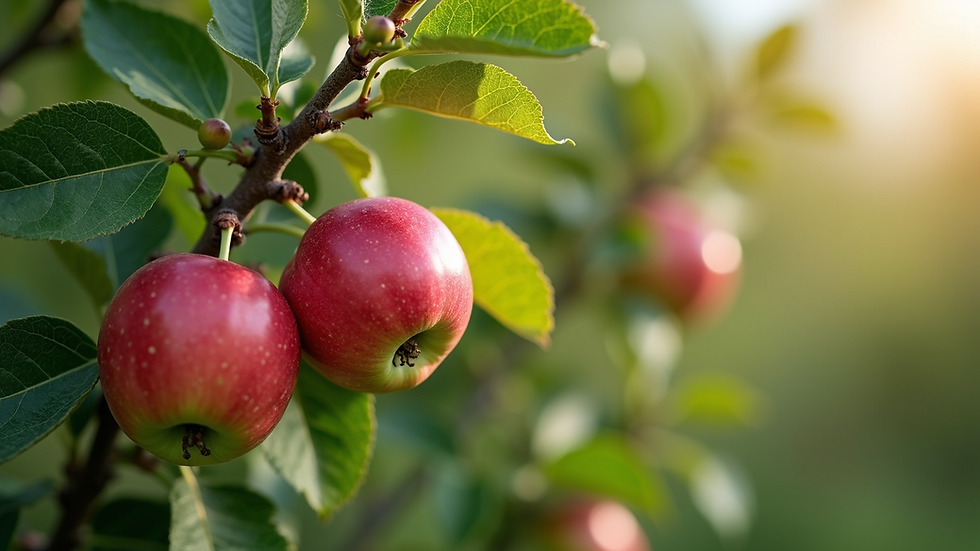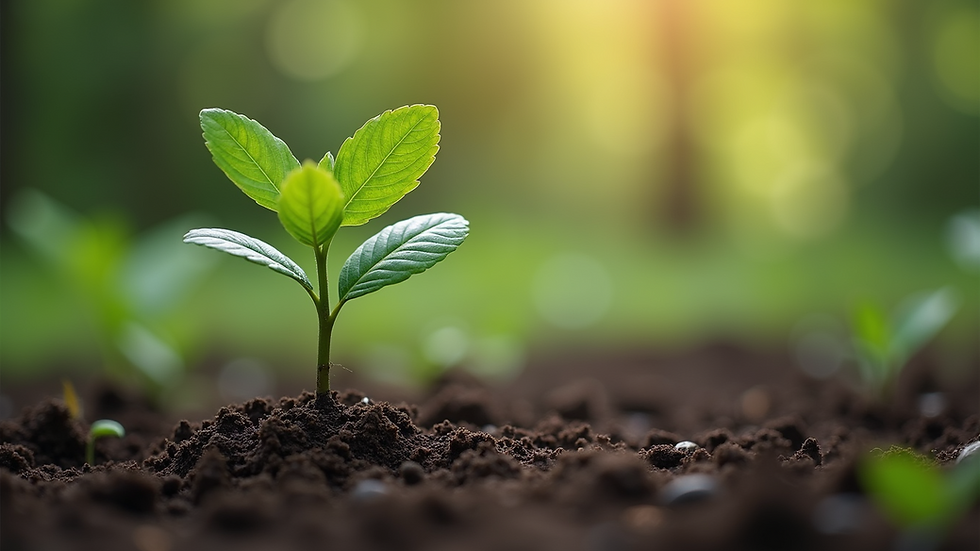Growing an Orchard: Environmental Care Tips for Tree Farms
- Bob Brooks Jr
- Aug 14
- 6 min read
Growing an orchard is a rewarding endeavor that not only provides delicious fruits but also contributes positively to the environment. As more people become aware of the importance of sustainable practices, tree farming has gained popularity. However, it is essential to approach this venture with care for the environment. In this post, we will explore practical tips for nurturing your orchard while being mindful of our planet.
Understanding the Basics of Orchard Care
Before diving into specific tips, it is crucial to understand the basics of orchard care. An orchard is a piece of land dedicated to growing fruit trees. The health of these trees depends on various factors, including soil quality, water availability, and pest management.
Healthy soil is the foundation of a thriving orchard. It is essential to test your soil regularly to determine its pH and nutrient levels. This information will help you make informed decisions about fertilization and amendments.
Water is another critical element. Trees need adequate moisture, especially during dry spells. However, overwatering can lead to root rot. It is vital to find a balance that keeps your trees healthy without wasting water.
Pest management is also a significant concern. Pests can damage trees and reduce fruit quality. Implementing integrated pest management (IPM) strategies can help control pests while minimizing harm to beneficial insects.
Choosing the Right Location
The location of your orchard plays a significant role in its success. Here are some factors to consider when selecting a site:
Sunlight: Most fruit trees require full sun for at least six hours a day. Choose a location that receives ample sunlight throughout the day.
Drainage: Good drainage is essential to prevent waterlogging. Avoid low-lying areas where water tends to accumulate.
Wind Protection: Strong winds can damage young trees. Consider planting windbreaks, such as shrubs or taller trees, to shield your orchard.
Accessibility: Ensure that your orchard is easily accessible for maintenance and harvesting. This will save you time and effort in the long run.
Selecting the Right Tree Varieties
Choosing the right tree varieties is crucial for a successful orchard. Different fruit trees have varying requirements and growth habits. Here are some popular options:
Apple Trees: These are versatile and can thrive in many climates. They require cross-pollination, so plant at least two varieties.
Pear Trees: Pears are relatively easy to grow and can tolerate poor soil conditions. They also require cross-pollination.
Cherry Trees: These trees are beautiful and produce delicious fruit. They prefer well-drained soil and full sun.
Peach Trees: Peaches thrive in warm climates and require a lot of sunlight. They are susceptible to diseases, so choose disease-resistant varieties.
When selecting tree varieties, consider your local climate and soil conditions. It is also helpful to consult with local agricultural extension services for recommendations.
Soil Health and Fertilization
Healthy soil is vital for the growth of your orchard. Here are some tips for maintaining soil health:
Organic Matter: Incorporate organic matter, such as compost or well-rotted manure, into your soil. This improves soil structure and provides essential nutrients.
Crop Rotation: Practice crop rotation to prevent nutrient depletion and reduce pest buildup. Alternate planting different crops in the same area each year.
Mulching: Apply a layer of mulch around your trees. This helps retain moisture, suppress weeds, and improve soil quality as it breaks down.
Soil Testing: Regularly test your soil to monitor nutrient levels and pH. This will help you determine the right fertilizers to use.
When it comes to fertilization, consider using organic fertilizers. They release nutrients slowly and improve soil health over time. Always follow recommended application rates to avoid over-fertilizing.
Watering Wisely
Watering is a critical aspect of orchard care. Here are some tips for efficient watering:
Drip Irrigation: Consider installing a drip irrigation system. This method delivers water directly to the roots, reducing waste and promoting healthy growth.
Watering Schedule: Water your trees deeply but infrequently. This encourages deep root growth and helps trees withstand drought conditions.
Mulch: As mentioned earlier, mulch helps retain moisture in the soil. This reduces the need for frequent watering.
Monitor Weather: Keep an eye on weather conditions. Adjust your watering schedule based on rainfall and temperature.
By watering wisely, you can conserve water while ensuring your trees receive the moisture they need.
Pest and Disease Management
Pests and diseases can pose significant challenges for orchard growers. Here are some strategies for effective management:
Regular Inspections: Regularly inspect your trees for signs of pests or diseases. Early detection is key to preventing widespread damage.
Beneficial Insects: Encourage beneficial insects, such as ladybugs and lacewings, which prey on harmful pests. Planting flowers that attract these insects can help.
Natural Remedies: Consider using natural remedies, such as neem oil or insecticidal soap, to control pests. These options are less harmful to beneficial insects and the environment.
Crop Diversity: Planting a variety of crops can help reduce pest pressure. Different plants attract different pests, making it harder for them to thrive.
By implementing these strategies, you can manage pests and diseases while minimizing harm to the environment.
Pruning for Health and Productivity
Pruning is an essential practice for maintaining the health and productivity of your orchard. Here are some tips for effective pruning:
Timing: Prune your trees during the dormant season, typically in late winter or early spring. This minimizes stress on the trees.
Remove Dead or Diseased Wood: Regularly remove any dead or diseased branches. This helps prevent the spread of diseases and encourages healthy growth.
Shape the Tree: Prune to shape the tree and improve air circulation. This reduces the risk of fungal diseases and allows sunlight to reach all parts of the tree.
Thin Fruit: If your trees produce too much fruit, consider thinning it out. This allows the remaining fruit to grow larger and healthier.
Pruning may seem daunting, but with practice, it becomes easier. Proper pruning techniques can lead to healthier trees and better fruit production.
Sustainable Practices for Orchard Management
Sustainability is a crucial aspect of modern orchard management. Here are some practices to consider:
Organic Farming: Consider transitioning to organic farming practices. This reduces chemical use and promotes biodiversity.
Cover Crops: Plant cover crops during the off-season. These crops improve soil health, prevent erosion, and provide habitat for beneficial insects.
Composting: Create a composting system to recycle organic waste from your orchard. This reduces waste and provides valuable nutrients for your soil.
Water Conservation: Implement water conservation practices, such as rainwater harvesting. This reduces reliance on municipal water sources.
By adopting sustainable practices, you can create a thriving orchard that benefits both you and the environment.
Engaging with the Community
Building a connection with your local community can enhance your orchard experience. Here are some ways to engage:
Farmers' Markets: Participate in local farmers' markets to sell your produce. This allows you to connect with customers and share your story.
Workshops: Host workshops or farm tours to educate others about sustainable practices. Sharing your knowledge can inspire others to adopt similar methods.
Community Supported Agriculture (CSA): Consider starting a CSA program. This allows community members to support your farm while receiving fresh produce.
Engaging with the community not only promotes your orchard but also fosters a sense of belonging and shared purpose.
The Joy of Harvesting
Harvesting is the most rewarding part of growing an orchard. After months of hard work, it is time to enjoy the fruits of your labor. Here are some tips for a successful harvest:
Timing: Harvest your fruit at the right time. Each fruit has its peak ripeness, so research the best time to pick.
Gentle Handling: Handle fruit gently to avoid bruising. Use padded containers to transport your harvest.
Storage: Store your fruit properly to extend its shelf life. Some fruits require refrigeration, while others do best at room temperature.
Share the Bounty: Consider sharing your harvest with friends, family, or local food banks. This spreads joy and helps those in need.
The joy of harvesting is not just about the fruit; it is about the journey and the connections you make along the way.
Final Thoughts on Orchard Care
Growing an orchard is a fulfilling journey that requires dedication and care. By following these environmental care tips, you can create a thriving tree farm that benefits both you and the planet. Remember to prioritize soil health, water wisely, manage pests sustainably, and engage with your community.
As you nurture your orchard, you will not only enjoy the fruits of your labor but also contribute to a healthier environment for future generations. Happy farming!



Comments